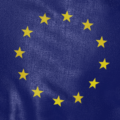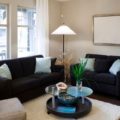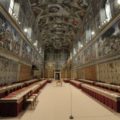This article delves into the fascinating family history behind the company SimplyLED

The story behind the company
The world of LED’s is important to everyone who wants to improve the quality of lighting while reducing the energy we use. But what makes this world fascinating as well as significant are the human stories behind it.
SimplyLED, for example, is a company based on a strong demand from the general public and businesses for cost-effective lighting solutions. However, Shari Burton and her husband did not set up SimplyLED purely as a response to a market opportunity. Shari’s involvement goes beyond this. She has a boundless enthusiasm for what she does because of her family history.
Leo Pincherle
Shari’s grandfather was Leo Pincherle (1910 – 1976). Physicists know him as an authority on the development of semiconductors, the material essential for modern electronics and LED lighting. Leo was a professor of mathematical physics at the University of London, Bedford College; the author of Electronic Energy Bands in Solids, published in 1971; and the inspiration for the Leo Pincherle Prize for Excellent in Physics.
Leo began life in Italy and took a degree in physics at Bologna. From 1932 to 1938, he worked at the Physics Institute and the taught theoretical physics at the University of Padua. Everything seemed to be in place for him to pursue an academic career in his home country.
in 1938, the Italian Racial Laws ended Leo’s hopes. The laws enforced discrimination against Italian Jews such as Leo. They denied the right to higher education and to hold public office. They also confiscated assets and limited the ability of Jews to travel within Italy.
Leo had to act quickly. He fled from Italy with his wife and son, Guido. After months of uncertainty and hardship, including the death of his second son, Aldo Italo, Leo and his family managed to reach England.
Leo was able to find work at King’s College, London. But the decision of Italy in 1940 to support the Germans in the Second World War went against him. The British government interned all Italian nationals, including Leo. King’s College objected to this treatment of one of their staff, and after five months Leo was free to resume work.
Following the defeat of Italy, Leo stayed in England to develop his academic career. In 1948 he became Principal Scientific Officer of the Telecommunications Research Establishment (TRE). Here Leo gained a reputation for his research into semiconductors. Seven years later, he accepted a post as a lecturer at the University of London, Bedford College; and in 1969 he became a professor at the same university. In his later years he contributed further as UK editor of the international journal Solid State Electronics.
LEDs and low energy electronics
The advent of modern LEDs, with their reliance on semiconductors, is a result of work by Leo and others like him. He may not have realised the direction semiconductors would take. In fact, his granddaughter Shari says ‘he would have been astounded at the use of semiconductors in LED lighting as we know it today’. Nonetheless, a link exists between Leo’s research and the LED lights used in your home and business today.
The family story does not end here, though. In 1950, Leo had a son called Hugh who inherited his father’s love of physics and electronics. Hugh’s interest focussed on low energy solutions, prompting him to research LCD (liquid crystal display) technology. As a result, he holds various patents for the development of LCDs in the 1970s.
SimplyLED
Hugh’s daughter, Shari, has now taken the family’s fascination with physics, electronics and low energy solutions a stage further. In early 2010, she and her husband founded SimplyLED, the first LED retail website in the UK/ Since then, SimplyLED has sold more that a million LED bulbs.
In a traditional sense, SimplyLED is not a long-standing family business. After all, LED technology in its current form is relatively new. But the company is a family business in another sense. It represents a preoccupation with physics, semiconductors and electronics spanning three highly successful generations.
Date: November 30, 2013
Tags: announcements simplyled
This article delves into the fascinating family history behind the company SimplyLED.



